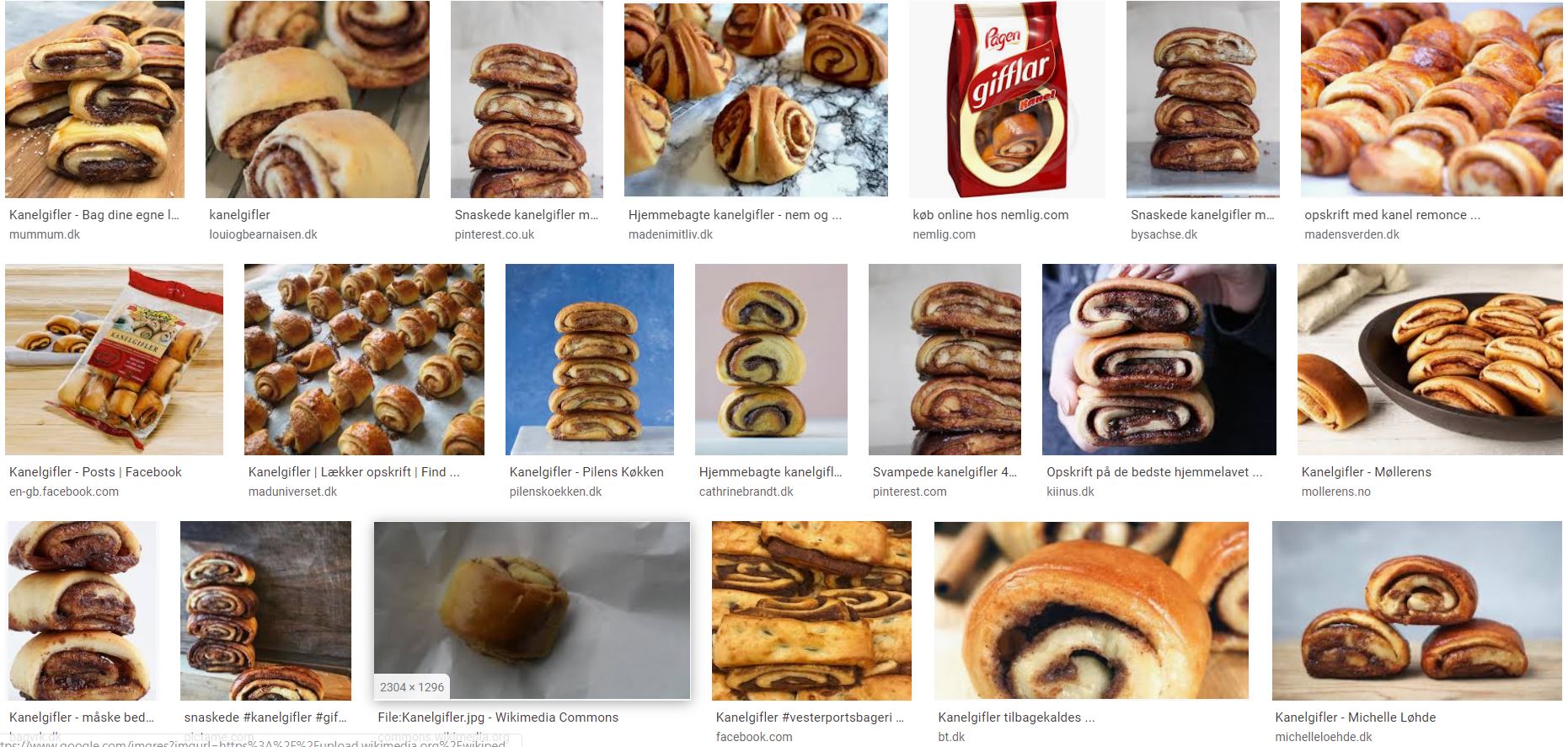This recipe showed up in my Pinterest feed: http://www.bysachse.dk/kanelgifler/. The final product looks unbelievable! But Google translate had a few issues (LOL!) So my questions are: 1. Does anyone know what we’d call these in English? 2. re the ingredients - should “dl” be “ml” and is “brown brownie” really “brown sugar?” and 3. I’m a little confused about the instructions pertaining to the fork - does anyone want to take a stab at explaining that part of the instructions? (and maybe I should have started this post by asking: Does anyone speak Danish?!)
DL = decilitre. So 2.5 = 250ml
My translator successfully translated it as "brown sugar"
Sweet puff pastry, blitz puff pastry, the fast one where chunks of butter are added after dough is mixed. Simple roll thin, filled and folded up, cut wide instead of narrow, laid on side instead of cut edge. Fork might be used to mix and smear sugar filling on rolled out dough? (Guess)
I would just call those cinnamon buns. Here in Germany (maybe on the other side of the pond too) we have them massproduced in supermarkets, called Gifflar. This recipe is like a naughty gourmet version of those. Then there is also Franzbrötchen, but they are essentially the same.
It's a simple yeasted dough filled with sweet cinnamon butter. I believe the fork is just for pressing dough together, like you would close puff pastry or ravioli. It doesn't seem essential.
- Bloom the yeast, then add the rest of the ingredients except the butter.
- Mix for 5 min. (I guess depends on the mixer), then add butter and incorporate.
- Let proof for 1 h, during that time make the filling. You can use plain white sugar, brown sugar or a mix of both (which is what they do here).
- Roll out to a rectangle, spread filling on it, roll into a roll and cut into pieces. Place them on a baking tray, cover and proof for another hour. Then bake at 200°C for 12-14 min.
What I usually do with those is pressing with a stick into the middle of the cut pieces, so the layers spread a little. Just google Franzbrötchen, they are essentially the same. Looks imo more appealing.
Hope this helps!
Thanks all for your responses. I think I might give these a try over the weekend - if I do, I will let you know how it goes! :)
BaniJP I just wanted to let you know that I think you are right... I googled "kanelgifler" and some of the images in the search results look similar to the Gifflar that you mentioned. But I also wonder if it's possible the Danes make "kanelgifler" in that flattened shape?... the search results showed many examples of a flattened shape, as you can see here in the image I posted.
Might be, in Finland they press the middle down a bit with a stick, so the sides spread a little and it leaves a little indent. But I'm quite sure the components and procedure are roughly the same over the Scandinavian countries.
I would use the recipe above as a starting point and then make it personal, shape it however you want. I'm sure you can also add some nice flavors and textures to the filling, like chopped nuts, diced apple, star anise, vanilla, tonka bean, rum etc.